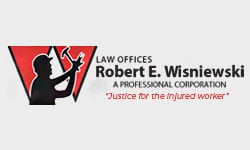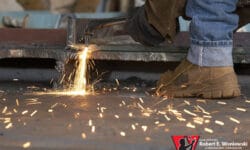Workers’ compensation for severe burns on the job in Arizona
According to the National Institute of Health, between 10 and 45 percent of all burn injuries occur in the workplace. One study indicated that 40 percent of all burn deaths were related to explosions and fires in the workplace, while 20 percent of all thermal burns were employment-related.
In November 2019, 3 contractors were injured when a transformer in Glendale caught fire. Two of those injured were flown to a local hospital with severe burns.
When there is a fire or explosion at work and you are injured, you may be entitled to workers’ compensation benefits depending on your work status and employer. If you need help with the workers’ compensation claim process, reach out to one of our attorneys at the Law Offices of Robert E. Wisniewski for help.
Common types of burns in the workplace
Although any type of burn can occur in the workplace, the most common include thermal, chemical and electrical.
- Thermal burns occur when the skin comes in contact with hot surfaces or liquids, steam or flames. Although most thermal burns are minor, almost 7 percent of people who suffer a thermal burn must seek treatment at a hospital.
- Chemical burns, sometimes called a “caustic” burn, occur when the skin comes in contact with some type of irritant, either an acid or a base. Car battery acid, bleach, ammonia, pool cleaning products and other chemicals can cause skin damage.
- Electrical burns occur when your skin comes in contact with electricity. When this happens, electricity can travel through the body and damage internal tissues and organs as well as skin.
Questions and answers about compensation for a job-related accident, injury or illness in Arizona
Burn degree levels
Burns are further classified by different degree levels. Treatments will depend on the severity of the burn.
- First-degree burns are superficial and affect only the outer layer of the skin. Normally, the skin is red, painful and dry with no blisters. A mild sunburn is considered a first-degree burn. With a first-degree burn, permanent skin damage is rare, although there could be a lightening or darkening of skin color where the burn occurred.
- Second-degree burns, known as partial-thickness burns, involve not only the outer layer of skin, (the epidermis) but also lower layers (the dermis). A second-degree burn blisters, turns red and may also be swollen.
- Third-degree burns are full-thickness burns. They completely destroy the epidermis and dermis, sometimes reaching the subcutaneous tissue. The area of the burn may look blackened or charred.
- Fourth-degree burns may involve not only all the layers of skin but also bones and muscles. Since nerve endings are destroyed, there may not be any pain from the burn initially.
Treatment for serious burn injuries
Minor first- and second-degree burns that cover less than 10 percent of the body rarely require a visit to the doctor or hospitalization. For a first-degree burn, run cool water over the burn rather than ice. A mild second-degree burn can be treated the same way, although you should see a doctor who may prescribe a strong antibiotic cream.
Second-degree burns are more prone to infection than first-degree burns. Moderate second-degree burns that cover 10 percent or more of the body may require hospitalization, especially if they occur on the hands, feet, face or genitals.
Severe third-degree burns that cover more than 1 percent of the body require advanced medical treatment. Third- and fourth-degree burns are life-threatening. They could require skin grafts, intravenous fluids and intensive treatment in a hospital setting.
Burns of any type can cause dehydration, excess fluid in the tissue, pneumonia, low blood pressure and severe infection.
Occupations and industries where burns are most common
Although a burn can occur in almost any occupation, there are some careers where burns are more common than others.
Restaurants top the list as employees are exposed to hot oil, grease and steam as well as stoves, grills, steamers and deep fryers. Servers must carry trays of hot food and beverages to tables as well. The Occupational Safety and Health Administration (OSHA) reports that deep fryers are responsible for the highest percentage of burn injuries in the restaurant industry.
Another profession that poses a high risk of burns is firefighting. In 2020, 8 percent of firefighters suffered a burn and 4 fatalities were burn-related.
Industrial and manufacturing employees are also at risk as they may be exposed to corrosive or caustic chemicals. Explosions are also more likely in a plant setting than in other industries.
Electricians, cable, satellite and other employees who work in close proximity to electricity also report higher incidences of burns than other industries.
Arizona workers’ compensation and workplace burns
In Arizona, if you suffer a burn while doing your job, you are likely eligible for workers’ compensation since most employers are required to carry this insurance. Even if the burn was caused by something you did wrong, workers’ compensation is a no-fault insurance program which means you are still covered for the injury.
There are exceptions, including if you intentionally burned yourself.
What to do if you are burned at work
The first thing you must do is report a workers’ compensation claim to your employer, even if you think the burn is mild. A burn may appear mild initially but could develop blisters or become infected later. You want to document that you were burned at work should the injury develop into something more serious. Visit a doctor as soon as possible after your injury then file a written claim at The Industrial Commission of Arizona.
In Arizona, your employer can require you to see a specific doctor but can only do so once. After that visit, you can see the doctor you prefer. Take pictures of the burn immediately after it occurs and again a few days later.
If you have suffered a burn at work, it is important that you contact an experienced workers’ compensation attorney near you. Hiring an attorney does not mean you plan to sue your employer; an attorney will simply make sure you get the compensation you are entitled to under the law.



